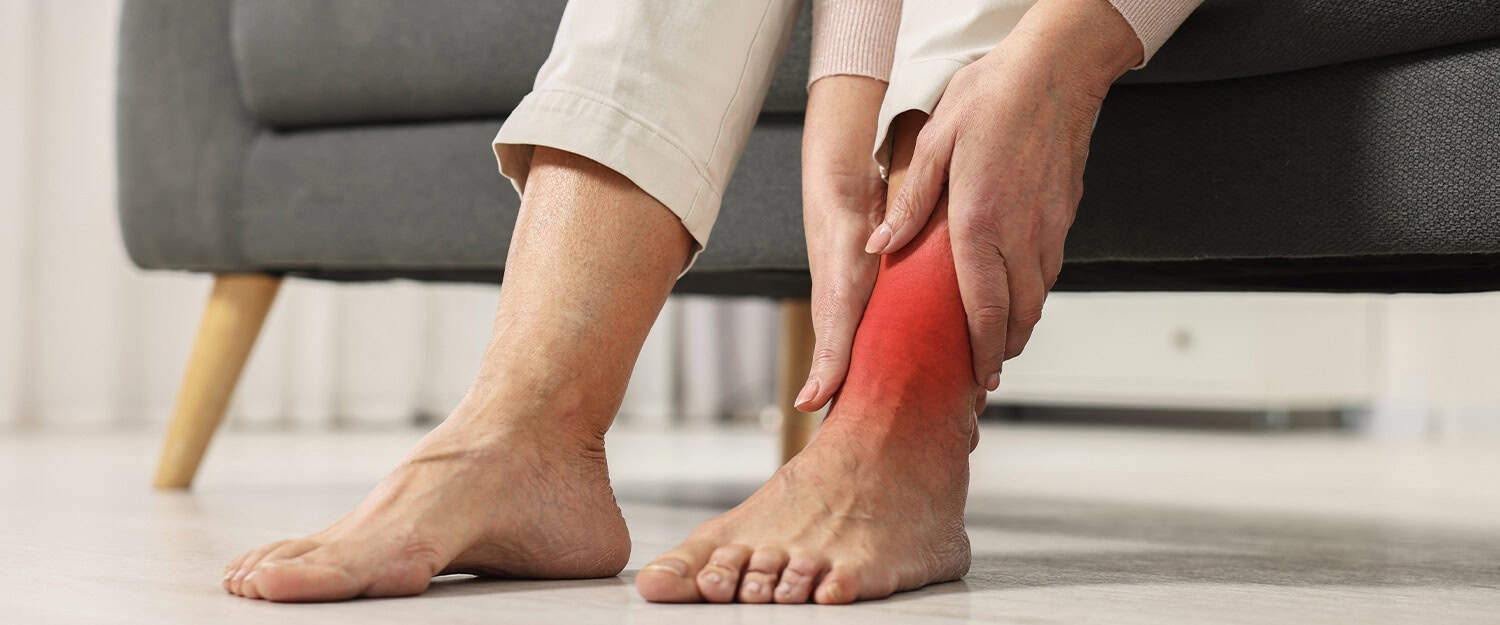
How Sprained Ankle Occurs and What to Do Next
A sprained ankle is a frequent injury that can occur to anyone, either during athletic activities, on uneven terrain while walking, or just missing a step. Although it may appear trivial to begin with, a sprained ankle can cause pain, restrict movement, and, if not treated properly, result in long-term complications. Knowing the way a sprained ankle develops and what to do after it is the most important factor in a speedy recovery.
What Is a Sprained Ankle?
A sprained ankle occurs when the ligaments that bind the bones in the ankle joint are stretched or ruptured. These ligaments provide stability to the joint and check excessive movement. When the foot is twisted past its normal range of motion, these ligaments can be damaged, causing pain, swelling, and instability.
The severity of a sprain can vary from mild to severe:
Grade 1: Minor stretching with little to no ligament tearing.
Grade 2: Tearing of the ligament partially with evidence of swelling and pain.
Grade 3: Total tearing of the ligament, sometimes associated with extreme swelling, pain, and difficulty when walking.
What Causes a Sprained Ankle?
There are numerous normal occurrences where an ankle sprain will take place:
Twisting one’s foot walking or running
Falling clumsily when doing sports or exercises
Dressing in the wrong or unstable footwear
Stepping on uneven ground or slipping
Athletes are particularly at risk of ankle sprains as a result of high physical exertion, but they can be experienced by anyone at any age or fitness level.
Symptoms of a Sprained Ankle
Identifying symptoms of a sprained ankle will ensure that it is given early treatment and heals properly. These are:
- Pain, particularly when trying to put weight on the foot
- Swelling near the joint of the ankle
- Bruising or discoloration
- Stiffness and decreased range of motion
- Popping upon injury (in certain instances)
- Walking or standing difficulty
Avoid ignoring these signs, even though the pain initially appears to be tolerable. Early assessment is beneficial in orchestrating an optimal recovery process.
What to Do Immediately After a Sprain
If you think you have a sprained ankle, doing the right things at the outset will avoid aggravating the injury and promote faster healing. Among the most often advised methods is the R.I.C.E. principle:
Rest: Don’t put weight on the ankle. Use crutches if necessary.
Ice: Put an ice pack wrapped in a cloth on the ankle for 15–20 minutes every few hours to reduce swelling.
Compression: Use an elastic bandage to compress the area and regulate swelling.
Elevation: Maintain the ankle in a raised position above heart level to minimize swelling.
Although these initial actions are beneficial, it’s also vital to have the ankle assessed by a medical doctor—particularly in case of intense pain, lack of ability to walk, or the swelling failing to subside within a couple of days.
Treatment Options for a Sprained Ankle
At Adam Vital Hospital, patients undergo a thorough assessment to ascertain the grade of the sprain. Treatment plans are customized according to the grade of the injury and patient needs. Some of the common treatments are:
Physical therapy: Directed exercises to regain strength, flexibility, and balance
Supportive devices: Ankle braces or compression wraps to support the joint
Pain management: Medications or cold therapy to alleviate pain
Rehabilitation programs: Tailored recovery schedules to enable the patient to recover and return to work or sport safely
For more severe conditions, including a Grade 3 sprain or when there is widespread ligament damage, surgical repair may be required. Adam Vital Hospital’s orthopedic surgeons employ sophisticated imaging and diagnostic tests to determine the extent of the injury and give the most suitable treatment plan.
Prevention Tips for the Future
After the ankle has healed, steps should be taken to prevent a repeat sprain. Recurrent injury will weaken the ankle and cause chronic instability. A few tips to help are as follows:
- Warming up well before physical exertion
- Using shoes that give good support and grip
- Exercising regularly to strengthen muscles around the ankle
- Do not run or walk on uneven ground if your ankle is weak.
- Wear ankle supports or braces on high-impact days if advised by your physician.
Conclusion
If your condition continues or becomes worse even after home treatment, it’s advisable to see an expert. Procrastination will lead to extended recovery periods or chronic joint problems. At Adam Vital Hospital, our orthopedic and rehabilitation specialists are waiting to evaluate your condition, walk you through healing, and have you back in full function.
Adam Vital Hospital offers expert diagnosis and treatment for Sprained ankles and other orthopedic injuries. If you’re experiencing ankle pain, swelling, or limited movement, we’re here to support your recovery every step of the way.
